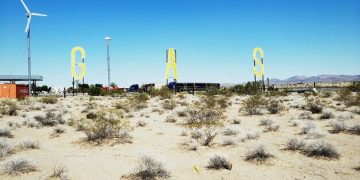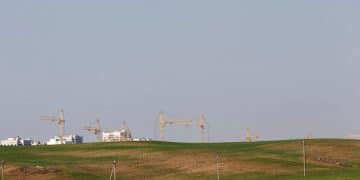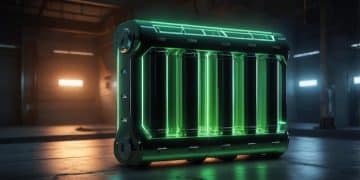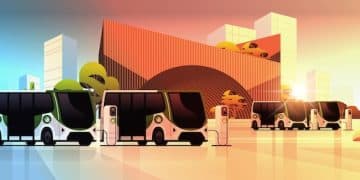DERs in the US Grid: Opportunities and Challenges
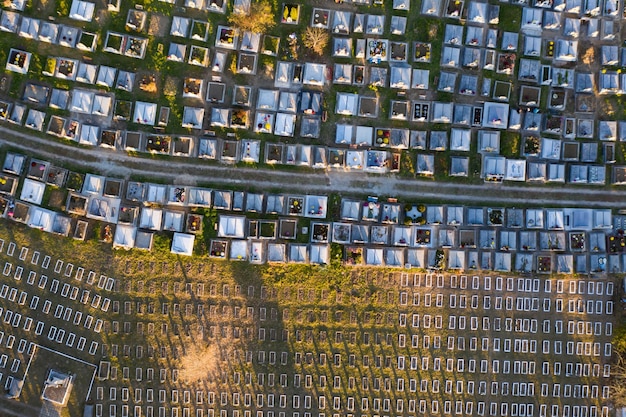
Integrating Distributed Energy Resources (DERs) into the US grid presents opportunities such as enhanced grid resilience, reduced emissions, and increased energy access, while also posing challenges related to grid stability, regulatory frameworks, and cybersecurity.
Distributed Energy Resources (DERs) are transforming the energy landscape in the United States, promising a more resilient, efficient, and sustainable grid. But what exactly are the opportunities and challenges of integrating Distributed Energy Resources (DERs) into the US Grid? Let’s dive in to explore this evolving future energy trend.
Understanding Distributed Energy Resources (DERs)
Distributed Energy Resources (DERs) are smaller-scale power generation and storage technologies located near the point of consumption. These resources are decentralized, in contrast to traditional large power plants feeding electricity into the grid over long distances.
DERs include solar photovoltaic (PV) systems, wind turbines, combined heat and power (CHP) units, energy storage systems (like batteries), and even controllable loads that can respond to grid signals.
Types of Distributed Energy Resources
Here’s a quick look at the primary types of DERs that are being integrated into the US grid:
- Solar PV Systems: Convert sunlight directly into electricity.
- Wind Turbines: Harness wind power to generate electricity.
- Energy Storage Systems: Store electricity for later use, enhancing grid stability.
- Combined Heat and Power (CHP): Systems that generate both electricity and heat from a single fuel source.
These technologies operate closer to the end-users, offering numerous benefits but also creating unique challenges for grid operators and regulators.
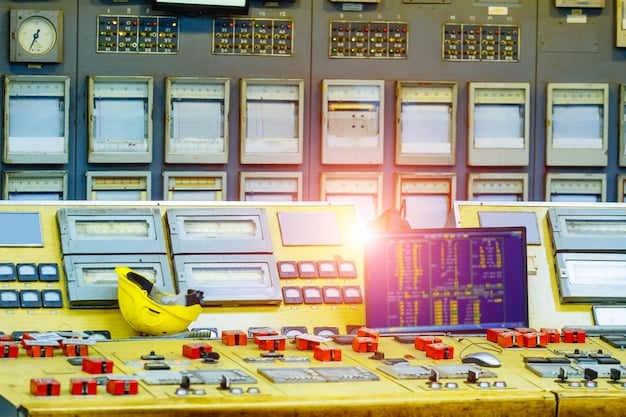
Opportunities of DER Integration
The integration of DERs offers a plethora of opportunities for the US grid, from enhancing grid resilience and reliability to reducing carbon emissions and fostering innovation. The benefits extend to consumers, utilities, and the environment alike.
Let’s explore the key opportunities:
Enhanced Grid Resilience and Reliability
DERs can significantly enhance grid resilience by providing backup power during outages. When centralized power plants fail or transmission lines are disrupted, DERs can continue to supply electricity locally, minimizing the impact of disruptions. This distributed nature of energy generation is especially valuable in areas prone to extreme weather events.
Reduced Carbon Emissions
One of the most significant benefits of DERs is their potential to reduce carbon emissions. Renewable DERs, such as solar and wind, produce electricity without burning fossil fuels, helping to decarbonize the energy sector. By integrating more renewable DERs, the US can make substantial progress towards its climate goals.
- Lower greenhouse gas emissions from electricity generation.
- Reduced reliance on fossil fuels.
- Support for a cleaner, more sustainable energy future.
Challenges of DER Integration
Despite the numerous opportunities, integrating DERs into the US grid poses significant challenges. These challenges range from technical issues related to grid stability to regulatory hurdles and cybersecurity concerns.
Let’s delve into the main challenges:
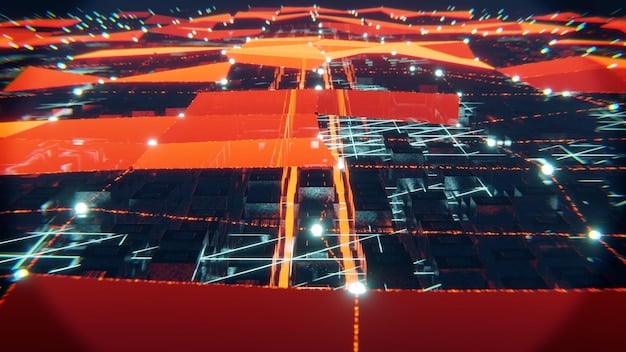
Grid Stability and Management
Integrating DERs can complicate grid management. Unlike large, centralized power plants that provide a predictable and constant flow of electricity, DERs are often intermittent and variable. Solar and wind generation depend on weather conditions, which can fluctuate rapidly, leading to imbalances between supply and demand.
Regulatory and Policy Frameworks
Current regulatory and policy frameworks often lag behind the rapid technological advancements in DERs. Many regulations were designed for a grid dominated by centralized power plants and do not adequately address the unique characteristics of DERs. This can create barriers to DER adoption and deployment.
- Lack of standardized interconnection protocols.
- Complex permitting processes.
- Uncertainty regarding compensation for DER services.
Cybersecurity Risks
As the grid becomes more decentralized and interconnected, it also becomes more vulnerable to cyberattacks. DERs, especially those connected to the internet, can be targeted by malicious actors seeking to disrupt the power supply or steal sensitive data. Ensuring the cybersecurity of DERs is crucial for maintaining grid reliability and security.
Technical Considerations for DER Integration
Integrating DERs requires careful technical planning and execution to ensure the grid remains stable and reliable. This includes addressing voltage fluctuations, managing power flow, and implementing advanced control systems.
Here are some key technical considerations:
Voltage Management
DERs can cause voltage fluctuations on the grid, particularly when they are generating electricity intermittently. These fluctuations can damage equipment and reduce the quality of power delivered to consumers. Advanced voltage management techniques are needed to mitigate these effects.
Power Flow Management
The traditional grid is designed for power to flow from large power plants to end-users. DERs, however, can cause power to flow in both directions, which can overload distribution circuits and lead to inefficiencies. Advanced power flow management systems are needed to optimize the flow of electricity.
- Improved distribution automation.
- Advanced metering infrastructure (AMI).
- Real-time monitoring and control.
Economic and Market Barriers
Economic and market barriers also hinder the widespread adoption of DERs. These barriers include high upfront costs, lack of financing options, and uncertainty about the value of DER services.
Let’s examine these barriers in more detail:
High Upfront Costs
Many DER technologies, such as solar PV and energy storage, have high upfront costs. While these costs have been declining rapidly, they are still a barrier for many consumers and businesses. Government incentives, such as tax credits and rebates, can help offset these costs.
Lack of Financing Options
Securing financing for DER projects can be challenging, especially for smaller-scale projects. Traditional lending institutions may be unfamiliar with DER technologies and hesitant to provide loans. Innovative financing models, such as power purchase agreements (PPAs) and leasing arrangements, can help overcome this barrier.
- Green banks and credit enhancements.
- Community solar programs.
- Energy-as-a-service models.
Policy and Regulatory Solutions
Addressing the challenges of DER integration requires comprehensive policy and regulatory solutions. These solutions should promote DER adoption while ensuring grid stability, fairness, and cybersecurity.
Here are some crucial policy and regulatory approaches:
Modernizing Grid Regulations
Grid regulations need to be modernized to accommodate DERs. This includes updating interconnection standards, streamlining permitting processes, and establishing clear rules for compensating DER owners for the services they provide to the grid. Regulatory reforms can create a more level playing field for DERs and encourage their deployment.
Incentivizing DER Adoption
Government incentives, such as tax credits, rebates, and grants, can play a crucial role in incentivizing DER adoption. These incentives can lower the upfront costs of DER technologies, making them more affordable for consumers and businesses. Performance-based incentives can also reward DER owners for providing valuable grid services.
- Federal and state tax credits.
- Renewable portfolio standards (RPS).
- Net metering policies.
Future Trends in DER Integration
The future of DER integration is expected to be shaped by several emerging trends. These trends include advancements in technology, evolving regulatory landscapes, and changing consumer preferences. As the grid becomes more decentralized and digitalized, DERs will play an increasingly important role in meeting the nation’s energy needs.
Some key future trends include:
Advancements in Energy Storage
Energy storage technologies are rapidly advancing, becoming more affordable, efficient, and versatile. Advanced batteries, pumped hydro storage, and other storage solutions will play a crucial role in integrating variable renewable DERs and enhancing grid stability. Energy storage can store excess electricity generated by solar and wind plants and dispatch it when needed, smoothing out fluctuations in supply.
Smart Grid Technologies
Smart grid technologies, such as advanced sensors, communication networks, and control systems, are essential for managing DERs effectively. These technologies enable real-time monitoring and control of the grid, allowing operators to respond quickly to changes in supply and demand. Smart grids can also facilitate the integration of DERs by providing better visibility and coordination.
- Artificial intelligence (AI) and machine learning (ML).
- Blockchain for energy trading.
- Virtual power plants (VPPs).
| Key Aspect | Brief Description |
|---|---|
| ☀️ Grid Resilience | DERs provide backup power, enhancing grid resilience during centralized power failures. |
| 🌱 Emission Reduction | Renewable DERs lower carbon emissions, supporting a more sustainable energy sector. |
| ⚡ Grid Stability | Managing intermittent DER output requires advanced grid management techniques. |
| 🛡️ Cybersecurity | Securing interconnected DERs is vital to avoid disruptions to the power supply. |
FAQ Section
▼
The primary types include solar PV systems, wind turbines, energy storage (batteries), and combined heat and power (CHP) units. These resources decentralize energy generation.
▼
DERs provide backup power during centralized power failures, ensuring a continued electricity supply locally, especially vital in areas susceptible to extreme weather events.
▼
Key challenges include maintaining grid stability due to intermittent DER output, adapting regulatory frameworks, and addressing cybersecurity risks in interconnected systems.
▼
Modernizing grid regulations, incentivizing DER adoption through tax credits, and streamlining permitting processes are essential policy changes for better DER integration.
▼
Future trends include advancements in energy storage technologies like batteries, increasing use of smart grid technologies, and innovative financing and trading models such as blockchain.
Conclusion
Integrating Distributed Energy Resources (DERs) into the US grid presents a dual narrative of opportunity and challenge. While DERs promise enhanced resilience, reduced emissions, and increased energy access, their effective integration requires overcoming technical, regulatory, and economic hurdles. Addressing these challenges with innovative policies and technologies will pave the way for a more sustainable and resilient energy future in the United States.
